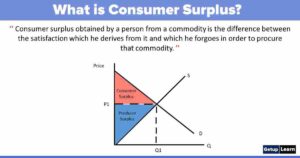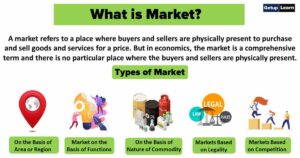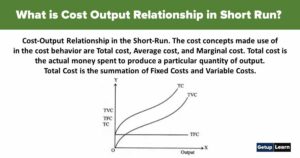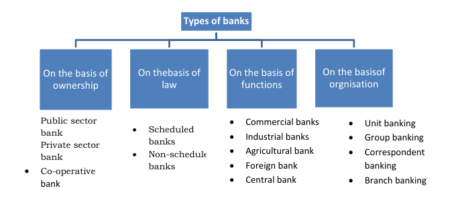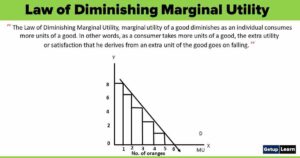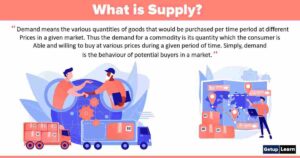Table of Contents
What is Monopolistic Competition?
Monopolistic competition is a market structure that lies between the extreme cases of competition and monopoly. Competition and monopoly lie at opposite ends of the market spectrum. Perfect competition and monopoly are rarely found in the real world and thus they do not represent the actual market situation.
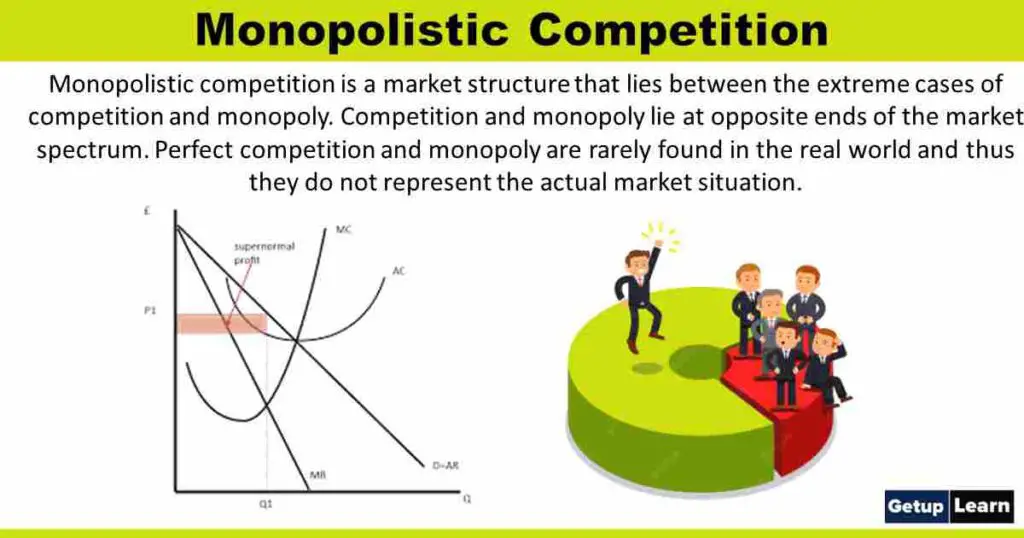
Table of Contents
Still, for many years economists believed that either the competitive or the monopoly model could be used to analyse most markets.
Nature of the Demand Curve of Monopolistic Competition
The demand curve of the monopolistic competition has the following characteristics:
Less than Perfectly Elastic
In monopolistic competition, no single firm dominates the industry and due to product differentiation, the product of each firm seems to be a close substitute, though not a perfect substitute for the products of the competitors. Due to this, the firm in question has a high elasticity of demand.
Demand Curve Slopes Downward
In monopolistic competition, the demand curve facing the firm slopes downward due to the varied tastes and preferences of consumers attached to the products of specific sellers. This implies that the demand curve is not perfectly elastic.
Characteristics of Monopolistic Competition
Following are the main characteristics of Monopolistic Competition:
- Product Differentiation
- Freedom of Entry and Exit of Firms
- Selling Cost
- Price Control
- Limited Mobility
- Imperfect Knowledge
- Non Price Competition

Product Differentiation
Product differentiation is the main feature of monopolistic competition. Product differentiation means that products of different types, brands, and qualities will be available to customers in a fixed time period. Product differentiation occurs when the buyer of a product can differentiate between two products.
In this, firms are in large numbers but their products are different from each other in any way, but these products are close substitutes for each other.
Product differentiation is obtained due to characteristics of a product like a shape, measurement, colour, durability, quality etc. There are many examples of product differentiation like bath soaps Lux, Godrej, Camay, Rexona, etc.
Freedom of Entry and Exit of Firms
In the situation of monopolistic competition, there is freedom of entry and exit of firms in the industry like perfect competition. It should be noticed that Chamberlin has used group at the place of the industry for a group of firms that produce differentiated products under the monopolistic competition.
Selling Cost
An important characteristic of monopolistic competition is that every firm spends more money in promoting its product under it. The firm gives advertisements in newspapers, cinemas, magazines, radio, T.V. etc. for selling its product in the maximum amount. The investment done on all these is called Selling Costs.
Price Control
Every firm has limited control over the cost of a product. The average income and limit end income curve of a firm fall down like a monopoly in monopolistic competition. It means that in this situation, the firm can slow down the price for selling more products and raise the price for fewer products.
In monopolistic competition, a firm has control over the cost of its production due to product differentiation. But due to the availability of close substitutes for opposite products firms do not have full control over cost in monopolistic competition.
The cost of every firm is affected by the cost policy of its competitors in the market up to a certain limit.
Limited Mobility
In monopolistic competition, sources of production and products do not have mobility in services.
Imperfect Knowledge
In the situation of monopolistic competition, buyers, sellers of products, and owners of sources do not have knowledge of the different prices of products. The reason is that comparison between productions of different firms is not possible due to product differentiation.
Customers are fond of the production of any one specific firm. They only buy the production of that firm even if it costs higher than others. In this way, even sources of production are not able to know fully how much the different firms are costing to the sources of services.
Non Price Competition
The main characteristic of monopolistic competition is that under it different firms without changing the costs of products compete with each other the example of companies producing ‘Surf’ and ‘Ariel’. If you take a box of ‘Surf’, you will get a glass utensil similarly, with the box of ‘Ariel’ you will get the steel spoon.
In this way, firms, by providing different types of facilities and products etc. to customers to attracts them toward their products. This type of competition is called a Non-Price Competition.
Features of Monopolistic Competition
The following are important features of monopolistic competition:
- A large number of Sellers
- Product Differentiation
- Non Price Competition
- Freedom of Entry and Exit
- Perfect Knowledge About Market and Technology
- Uniform Price

A large Number of Sellers
The market consists of a relatively large number of sellers or firms each satisfying a small share of the market demand for the commodity. Unlike perfect competition, these large numbers of firms do not produce homogeneous products.
Product Differentiation
Product differentiation is a key feature of monopolistic competition. Product differentiation is a situation in which firms use a number of devices to distinguish their products from those of other firms in the same industry. Products produced by the firms are close substitutes for each other. Products are not identical but are slightly different from each other.
In the case of monopoly, there is only one product and only one seller, and under perfect competition, a large number of sellers sell homogeneous products. But under monopolistic competition, the firms can differentiate their products from one another in respect of their shape, size, colour, design, packaging, etc.
Products of individual firms are generally identifiable, even though they may be very similar to the products of other firms. Product differentiation may be real or it may be based on perceived differences by consumers.
Non-Price Competition
Firms incur considerable expenditure on advertisement and other selling costs to promote the sales of their products. Promoting sales of their products through advertisement is an important example of non-price competition.
The expenditure incurred on advertisement is prominent among the various types of selling costs. But Chamberlin defines selling costs as “cost incurred in order to alter the position or the shape of the demand curve for a product”.
Thus his concept of selling cost is not exactly the same as advertisement cost. Selling cost is the advertisement cost plus expenditure on sales promotion schemes, salary and commission paid to sales personnel, allowance to retailers for displays and cost of after-sale services.
Freedom of Entry and Exit
In a monopolistically competitive industry, it is easy for new firms to enter and the existing firms to leave it. As in the case of perfect competition, there is no barrier to the entry of new firms and the exit of old ones from the industry.
Firms will enter the industry attracted by the supernormal profit of existing firms and existing firms will leave the industry if they are making losses. The entry of new firms reduces the market share of the existing ones and the exit of firms does the opposite.
These consequences of free entry and exit lead to intense competition among the firms for both retaining and increasing their market share.
Perfect Knowledge About Market and Technology
There is the absence of perfect knowledge. That is buyers and sellers do not have perfect knowledge about market conditions. All firms have complete information about the market and technologies available for producing the product.
It ensures that all the firms in the industry have the same cost structure. No firm enjoys an additional competitive advantage on account of lower cost.
Uniform Price
There is no uniform price. Different producers charge different prices for their products because products are differentiated in some way.
Equilibrium Under Monopolistic Competition
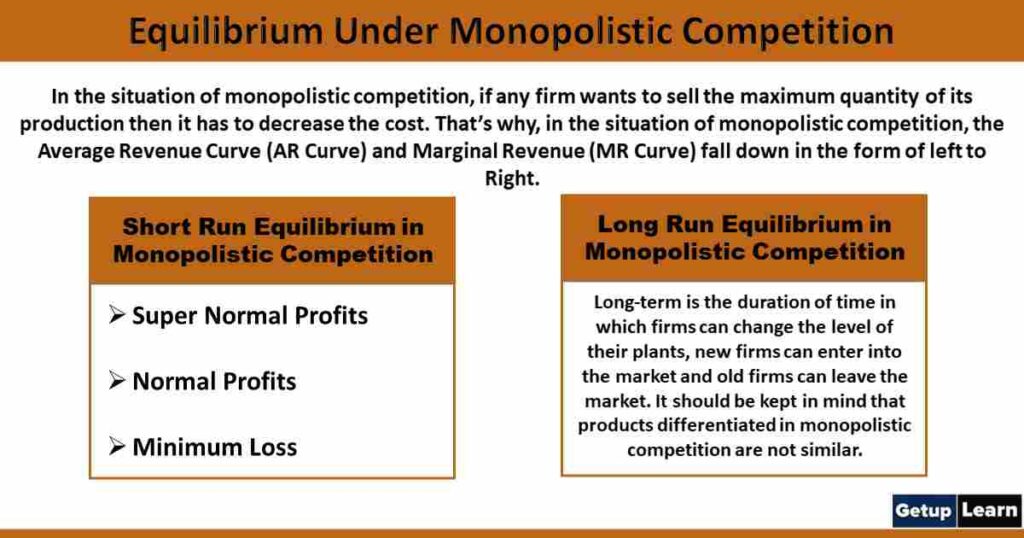
In the situation of monopolistic competition, if any firm wants to sell the maximum quantity of its production then it has to decrease the cost. That’s why, in the situation of monopolistic competition, the Average Revenue Curve (AR Curve) and Marginal Revenue (MR Curve) fall down in the form of left to right.
In monopolistic competition, a firm produces till the point or limit at which
- Marginal Revenue is equal to Marginal Cost (MR = MC)
- The marginal Revenue Curve cuts the Marginal Cost Curve from the lower side. In this situation, the firm is in the condition of balancing the production.
The study of equilibrium firms in monopolistic competition can be done in two different durations:
Short Run Equilibrium in Monopolistic Competition
Short Run is the duration of time in which production can be increased only by the increase in using variable resources on increasing demand. There is no time to increase or decrease constant resources of production like machines, plants, buildings, etc.
In the short run, an equilibrium of a firm will be in that situation in which (1) MC = MR and (2) MC curve will be cutting the MR curve.
There can be three conditions for firms in this duration of time:
Super Normal Profits
The firm is in equilibrium at point E because the marginal cost and marginal revenue are equal (MR = MC) on point E and the MC curve cut the MR curve from the lower side. It is known by point E that OM will be the equilibrium production of the firm.
The cost of equilibrium production is OC (= AM). The cost (AM) of equilibrium production will be less (AM ˂ BM) than average Revenue BM so every unit of the firm is obtained Super Normal Profits BM – AM = AB. The firm has total supernormal profit ABCP.
Normal Profits
In the short run, firms of monopolistic competition can have normal profits. the firm will be in an equilibrium situation at point E because at point E (i) MC = MR and (ii) MC curve cut MR from the lower side. It is known by point E that OM will be the equilibrium production.
The cost of equilibrium production is OP (AM) and the average cost is also OP (AM). The reason is that the AR curve is touching the AC curve at point A. That’s why in the situation of equilibrium cost (AR) and average cost (AC) are equal (AR = AC). Therefore, only normal profits will obtain from the firm.
Minimum Loss
The firm can also have a loss of fixed costs in the short run. This is the minimum loss of the firm. The firm will be in equilibrium at point E. At this point, MC = MR and MC curve cut MR curve from the lower side. In the equilibrium condition, the firm will produce OM.
The cost of equilibrium quantity OM is OP (= BM) and the average cost is OP1 (= NM). A short-run average cost of the firm is more than (SAC > AR). So the firm will have a per-unit loss of NM – BM = BN. Total loss of firm will be the area of NBPP1.
Long Run Equilibrium in Monopolistic Competition
Long-term is the duration of time in which firms can change the level of their plants, new firms can enter into the market and old firms can leave the market. It should be kept in mind that products differentiated in monopolistic competition are not similar.
Chamberlin had used the word product group at the place of industry to those firms which produce the differentiated products.
In Figure, LAC is the long-run average cost curve and LMC is the long-run marginal curve. AR is lead average and MR is a marginal lead curve. MR and MC at point E are equal to each other. Therefore, it will be an equilibrium point.
OM will be produced on this point, which costs OP(=AM). The average revenue curve on equilibrium production OM is touching the long-run average cost curve at point A. So, in the equilibrium condition, cost and long-run average cost (AR = LAC) are equal to each other.
Therefore, firms are earning only normal profits. There will be maximum profits of LAC and AR at ‘A’, Point of Tangency. The reason is that on any other cost average cost (AC) is more than the average revenue (AR) of the long-run average cost curve (AR) so the firm will incur a loss.
Due to the normal profits obtained by the firm, there will be no encouragement for the entry of new firms in the group and no reason for the exit of old firms from the group.
Types of Imperfect Competition
There are different types of imperfect competition are as given under:

Monopolistic Competition
It is one of the forms of imperfect competition. There is neither perfect competition nor pure monopoly market structures in practice. Monopolistic competition is a market structure in between perfect competition and monopoly. It has some of the characteristics of perfect competition and some of the characteristics of monopoly.
Some of the definitions of monopolistic competition are given below:
[su_quote cite=”Professor Leftwitch”]“Monopolistic competition is a market situation in which there are many sellers of a particular product, but the product of each seller is in some way differentiated in the minds of consumers from the product of every other seller.”[/su_quote]
[su_quote cite=”Professor Chamberlin”]“Monopolistic competition is that market structure in which there is co-existence of competition and monopoly in some degrees.”[/su_quote]
[su_quote cite=”Professor J.S. Bain”]“Monopolistic competition is a market structure found in the industry where there are large number of small sellers, selling differentiated but close substitute products.”[/su_quote]
Characteristics of Monopolistic Competition
The following are the features or characteristics of monopolistic competition:
- A Large Number of Buyers and Sellers
- Product Differentiation
- Free Entry and Exit of Firms
- Non-price Competition
- Varying Preferences of Consumers
- Facilities for the Customers
- Existence of Competition and Monopoly Elements
- The Demand Curve is Highly Elastic
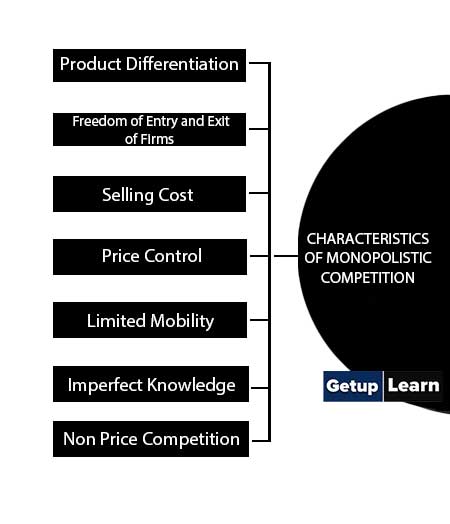
A Large Number of Buyers and Sellers
In a monopolistic competition market, there is a large number of buyers and sellers. Sellers of a commodity are not in a position to affect the market behaviour individually and the buyers purchase the goods as per their preferences. The number of buyers and sellers is smaller than those of perfect competition in this market.
Product Differentiation
Product differentiation is another characteristic of monopolistic competition. But these products are near substitutes. The differentiation is based on the quality, shape, size, packing, trademark, brand, colour, behaviour of the seller and location of the shop. However, being the differentiation the products of a seller are the close substitutes for another seller.
Free Entry and Exit of Firms
Under this market structure, all the firms are free to enter and exit in the industry as and when they are interested. New firms are free to enter the market with new brands of products that are close substitutes for the existing brands.
Non-price Competition
Under monopolistic competition, firms compete with one another without changing the prices of their products. But they indulge in advertisement and sales promotion techniques (non-price competition) to attract more customers in order to boost their sales.
Varying Preferences of Consumers
Under monopolistic competition, sellers are selling varied products which are different in quality and quantity. Buyers buy these products according to their preferences, nature, income etc. Buyers are attracted by the sellers on the basis of the specialized qualities of their products.
Facilities for the Customers
Under monopolistic competition sellers of a product provide various facilities to their customers so that they are attracted to purchase more of their products. The credit facility, home delivery, and repair facility. All these facilities attract customers.
Existence of Competition and Monopoly Elements
Under monopolistic competition, some of the characteristics of perfect competition are in existence such as a large number of buyers and sellers, and free entry and exit of firms in the industry. On the other hand, some of the salient features of monopoly namely product differentiation and non-price competition are also found in this market.
The Demand Curve is Highly Elastic
Under monopolistic competition, the demand curve is highly elastic because firms are free to enter and exit the industry.
Thus we can say that product differentiation is the main character on the basis of which monopolistic competition is recognized as a different market structure.
Oligopoly
Oligopoly is one of the kinds of imperfect competition. It is a market structure where the number of sellers is few. Oligopoly may be of two types. First is pure oligopoly where the homogeneous product is sold while oligopoly may be differentiated oligopoly when the products are differentiated.
Reactions of firms are taken into consideration and the firms are interdependent. Thus oligopoly is a market situation in which there are few sellers of a product and each seller’s supply affects the market prices.
Characteristics of Oligopoly
The following are the features or Characteristics of oligopoly market structure:
- A Few Sellers
- Homogenous and Differentiated Products
- Interdependence
- Advertisement and Sales Promotion Costs
- Cutthroat Competition
- Restrictions on the Entry and Exit of Firms
- Indeterminate Demand Curve
- Price Rigidity
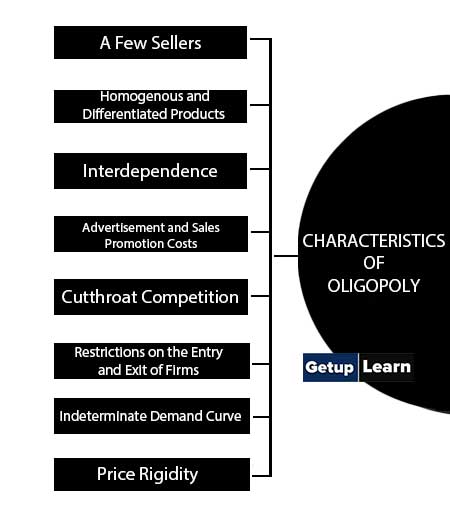
A Few Sellers
Under an oligopoly market, there is a few sellers of a commodity. Each seller controls a major part of the total supply in the market and by his activities, other sellers are affected and he is in a position to influence the price of the product in the market.
Homogenous and Differentiated Products
Under the oligopoly sellers may sell homogenous or differentiated products. On the basis of these products, oligopolists may be called pure oligopolies or oligopolies with product differentiation.
Interdependence
All the firms under oligopoly are interdependent. The policies of an individual affect the policies of other sellers of the product because these products are close substitutes. Production and price policies are taken into consideration while formulating these policies by each producer or seller in the market.
Advertisement and Sales Promotion Costs
Under oligopoly, the interdependency of producers or sellers in the advertisement and sales promotion costs play an important role. By spending on these activities, the seller will be in a position to attract more and more customers and boost his sales in comparison to his competitors who are spending less on these activities. Other competitors are also forced to spend on these activities in order to keep themselves in the market.
Cutthroat Competition
All these firms or sellers have cutthroat competition under the oligopoly market structure. Due to the existence of such competition sellers forms their cartel.
Restrictions on the Entry and Exit of Firms
Under this type of market entry and exit of the firm is difficult because of patent rights, trademarks, brands, and preferences. Old firms are unable to leave the industry because of heavy investment in permanent assets.
Indeterminate Demand Curve
In an oligopoly market structure, the demand curve of a firm is not definite because the behaviour of an individual firm is not free and certain. The behaviour of an individual firm depends upon the behaviour of other firms in the market. We cannot draw a demand curve on account of such uncertainty.
Price Rigidity
Under an oligopoly market structure, there is price rigidity and price war. Individual firm reacts and acts according to the actions of the other firms and a price war starts between them and which leads to cutthroat competition or price war and price rigidity emerges.
Duopoly
A market wherein there are two sellers or producers of a product is called a duopoly. They have a complete hold over the supply of that product. The product of both the sellers is homogeneous and the price is also the same.
Both the firms are interdependent and they try to keep the same price. If a seller of the commodity lowers the price then the other seller is forced to reduce its price because customers will prefer to purchase the cheaper commodities.
Both the sellers have to think over the possible impact when they are taking independent decisions relating to price and production. In order to maximize the profits of each other, they may form an association or can share the market and can charge high prices to the customers. It will lead to exploitation of the customers.
What are the 5 characteristics of an oligopoly?
These are some characteristics of an oligopoly: 1. A Few Sellers, 2. Homogenous and Differentiated Products, 3. Interdependence, 4. Advertisement and Sales Promotion Costs, 5. Cutthroat Competition, 6. Restrictions on the Entry and Exit of Firms, 7. Price Rigidity etc.
What is the meaning of monopolistic competition and examples?
Monopolistic competition is a market structure that lies between the extreme cases of competition and monopoly. Competition and monopoly lie at opposite ends of the market spectrum. Perfect competition and monopoly are rarely found in the real world and thus they do not represent the actual market situation.
What are the 4 characteristics of monopolistic?
Following are the 4 characteristics of monopolistic given below:
1. Product Differentiation
2. Freedom of Entry and Exit of Firms
3. Selling Cost
4. Price Control
5. Limited Mobility
6. Imperfect Knowledge
7. Non-Price Competition etc.

